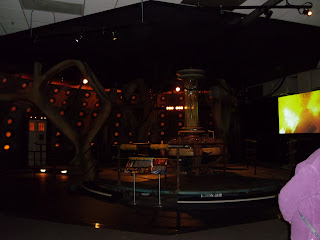So this is the last assessed blog (though by no means the last, you'll still have to hear me witter on in personal blogs :P), where I see all my strengths and weaknesses and evaluate the course...so here goes...
The GA course is fantastic. The people we get to hear from and the lessons we have I have really enjoyed. I mean if you know me you'll know I really panic over my skills sometimes - and if you remember the lecture from Blitz with the fox in pants...that really settled me. To know that I didn't have to be so perfect and that that was some of the stuff they were getting; was one of the first things as a first year to truly settle my nerves. So yeah, more awesome industry talks please!
Secondly, I love the visual design lessons especially when we go out to places. This has helped me organise my own little trips as going to say Bradgate park first with a group has given me more confidence to plan such trips. One of my favourite outings was the pumping station, where being a Leicester girl I watched about all the history and really got into drawing the massive wheels - which to date is one of my favourite pieces of work. In areas where I have found difficulty help has been on hand even with one to one help which I really benefited from.
 |
| - My pumping station final, a piece of work which via it's quality I think shows how much I enjoyed the day. |
3D is good too, although I feel sometimes it is a little fast and hard to pick up straight away; this may be my problem though as I do struggle with it. Constructively, I think the tutorials could be a bit more detailed or made easier to understand, and keep the Guru/grasshopper thing going, it's extremely beneficial to people like me who haven't had all that experience.
The Blog and Critical studies I have really enjoyed - I wish our class would speak up a bit though ;) it's a little quiet! I don't know if you've enjoyed my ramblings but I have found it very fun putting humor into them...especially doing my rave-esque presentation...it really was awesome. I have liked writing about issues to do with gaming (see 'Hello my game is...and I have a problem') and showcasing my other talents i.e. my singing in personal blogs.
So what about me?
Overall, I have had a big adjustment with this course. It is hard going from being excellent to a pool where pretty much everyone is excellent...and then some. My biggest hiccup has to be the 3D stuff, It makes me so stressed that i still can't stick this stuff...although that dosen't mean i'm giving up! After completing like my 10th church today I know i will get this. I'm also looking into what extra tuition is out there and i've been offered some training on a project re-imagining the lost theatre in London (randomly my singing teacher's daughter's husband is a 3D artist running the project :D) so hopefully that'll help too.
Reflecting on myself I really need to stop worrying and over-thinking things. This is really hard as how I am does make me obsess... but I am trying step by step to manage the feelings of stress about everything. I also think practising better time management can help me achieve better results. A lot of my dilemma relates to my own lack of self confidence also.
So yeah, That was everything on me, myself and the GA from the saff
Later,







